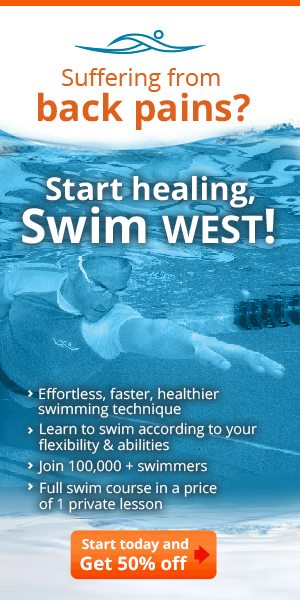In open water not everything is in your head, a strong head won’t get you through the sea.
I sometimes hear runners say: “It’s all in your head”, and somehow they finish the run, even if they didn’t train enough for the race.
The problem is that in the ocean this phrase doesn’t take into account that in everyday life we walk on our feet, not skip on tiptoes from point to point, and definitely not live in the water (regrettably for me)/
When a marathon runner can’t run anymore he can walk a little, rest, sit on a bench, eat something and decide whether he wants to continue. Danger begins when we’re not talking about a runner but a swimmer, and he gets to an open water swim and realizes not everything is in the head.
**It is for good reason the swimming comes first in a triathlon. Many runners who try to swim after running feel the muscles in their legs are cramped and they can’t lift their hands.
As a manager of open water swims I get to hear that phrase a lot: “Dude! It’s all in the head!”
The first time I heard it I laughed, but after that I got to watch over that swimmer very closely, and in 90% of the cases he would feel distress, get leg cramps and had to get on the boat.
The main reason for this is that swimming is different than running. The muscles are very different (shorter). A trained swimmer can run a long distance even if he never trained for it (not saying you should run without training!) but a marathon runner who never swam in his life will usually sink in the water, his oxygen will run out very quickly and in most cases he would feel leg and foot cramps, he will come out of the water frustrated and wouldn’t understand how he can run 100km but can’t even swim 25m freestyle.
Many people say that the ocean is incredible, astounding, that it calls them in, but it’s important to know that that same energy can cause a trauma at best and a disaster at worst.
When can we go into the ocean?
The thumb rule says you have to be able to swim 1000m easily (if you intend to swim in a lake or in Greece, 500m is enough). It’s advisable to know how to breath every 3 strokes and do it easily and only the enter the ocean. The reason is we have to know how to swim in “lab conditions”, meaning calm water with no waves or currents and without undertows, before we jump into the ocean, just like we won’t go running on a mountain’ on rocky terrain, with a two hour climb, before we can run easily for two hours on a plain or even on asphalt.
In most situation the swimming distance of 1000m was not determined arbitrarily. To pass the wave area you need to swim 200m and you have to be able to swim another 200-300m to reach the shore in case you get tired.
Another tip is to practice open water drills in the pool before getting into the ocean, e.g. dolphin dive, underwater movement and looking forward while swimming. The goal is to succeed in those drills before hazarding the salty water.
Without practicing going through waves and swimming while looking forward your neck can oxedize very quickly and make you feel tired
In conclusion, it’s imperative to know how to swim in the ocean, to get to know the ocean’s energy. It’s important to know that you will burn more calories and fat as a result of the changing temperature and currents, and it’s very important to strengthen muscles we didn’t pay attention to so far in a swimming pool before you start.
Before you go into the ocean or participate in your first triathlon, please learn how to swim correctly, even if it takes you an extra month, and only then, when you’ve swum 1000m in a swimming pool, and you are ready, jump into the ocean with a big smile.



